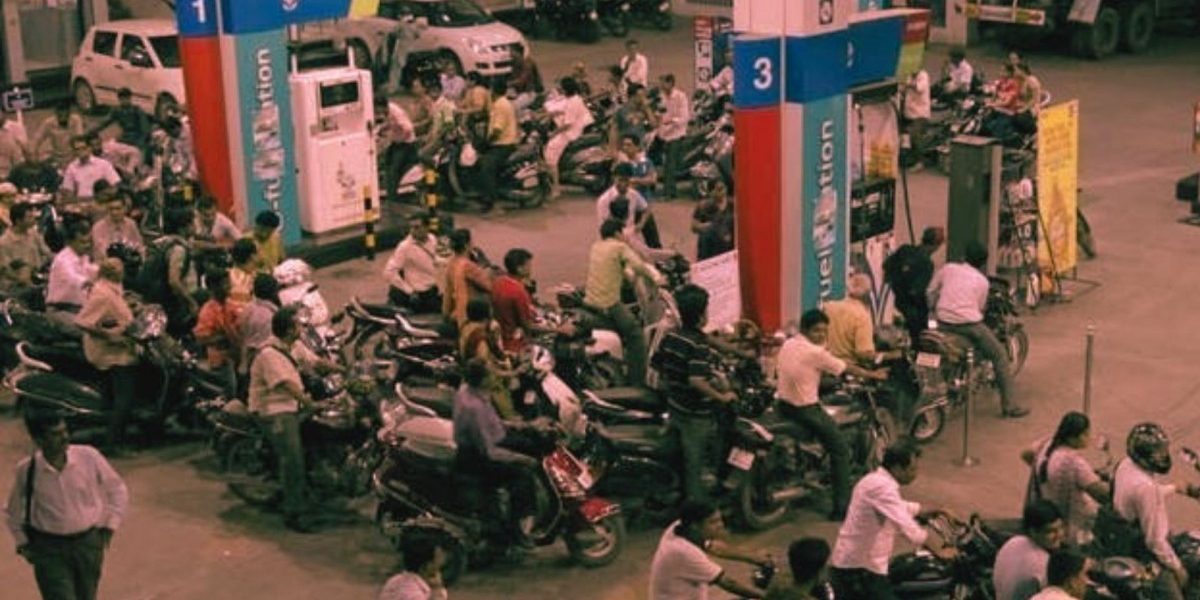New Delhi: Uttar Pradesh minister Upendra Tiwari stoked controversy this week while defending the Narendra Modi government’s decision to maintain high taxes on fuel prices, by claiming that the skyrocketing value of the petroleum products was only borne by 5% of the country’s population.
“Today, there are just a handful of people who travel in four-wheel vehicles and use petrol. At present, 95% people don’t need petrol,” Tiwari told reporters in Jalaun.
Exorbitantly high taxes – irrespective of the fluctuations in prices of global crude – have pushed the cost of petrol and diesel to record highs across the country in 2021. The price of petrol in New Delhi is Rs 105.84 per litre, up Rs 4.65 per litre over the last three weeks while the price of diesel is at Rs 94.6 per litre, up Rs 5.75 per litre over the same period.
In June 2021, buying petrol in Mumbai cost almost twice as much as it would have in New York.
This strategic ‘high tax’ playbook followed by the Modi government has been defended by its leaders and ministers at the Union government and various state governments through a number of ways.
One popular narrative is that the middle-class should bear its suffering in silence as the revenue is needed to fund infrastructure or ‘free’ vaccines. Another defence trotted out is that the previous Congress government left the Indian state’s finances in such a bad shape that the current government has no choice but to keep taxes high on petrol and diesel.
Tiwari’s salvo, however, is populist in nature – he is saying that only a small elite number of Indians use cars and therefore high prices don’t really impact most Indians.
While this may be true on the surface, it misunderstands how petroleum products interact with other parts of the Indian economy. The Wire breaks it down.
1) It’s not just cars…
While a few economists and experts would argue that petroleum products and even cars should be subjected to some form of a ‘sin tax’ – similar to liquor or cigarettes, considering the damage that fossil fuels do to the environment – it’s silly to assume that only rich Indians who own cars are being affected by high prices.
First, petrol and diesel are also used to power two-wheelers, a form of transportation used across the country by many lower-income Indian households. Yes, two-wheelers consume less petrol and diesel than cars, but it’s also more likely that owners of scooters and motorbikes were adversely impacted by the economic slowdown and found themselves hit by a double whammy just as the economy is starting to recover.

The proof of the pudding is of course in the tasting: if the price of petrol and diesel were consumed by a tiny minority of Indians, why do fuel prices find themselves magically frozen any time there is a state election in the offing?
Oil marketing companies and bureaucrats insist that India has deregulated fuel prices, but somehow whenever there is a key election to be won, prices at the pump don’t rise, even if there has been an increase in international rates.
2) The economy is connected…
More importantly though, petroleum products are what policy-makers and companies refer to as ‘input goods’ i.e, they are the ingredients used to manufacture and transport goods around the country.
Therefore, when the cost of diesel goes up, freight costs go up. This makes everything across the board slightly more expensive, thus impacting a huge number of companies and Indian customers across income categories.
This impacts everything from Swiggy and Zomato deliveries (the more that delivery boys have to churn out for petrol, the more you end up paying) to Parle G biscuits (whose parent company has to pay more for logistics).
In March 2021, the All India Transporters Welfare Association (AITWA) said that surging diesel prices over the previous 12 month led to an increase of 25% in freight rates across different modes of transport.
On top of this of course, is the segment of population that always draws the short end of the stick – India’s farmers. Rising diesel prices increase the cost of crop cultivation, even over and above the subsidy that some farmers get for fuel.
3) So, is fuel inflation driving up overall inflation?
This is a little more complicated than it seems. Yes, fuel inflation should drive overall inflation. However, in India, retail inflation actually eased to a 5-month-low in September 2021, helped mainly by lower food prices and weak consumer demand.
There is some anecdotal evidence that companies may not be passing on higher fuel costs to consumers yet, because weak demand conditions are still lingering in the aftermath of the COVID-19 lockdown. For instance, a recent story notes that trucking companies are holding back further hikes because of weak demand. This mutes the overall cascading effect of fuel prices as explained in the previous section.
A more recent analysis highlights this development: even though fuel inflation is at an all-time high in India, the headline Consumer Price Index (CPI) number, which measures retail inflation, is a lot lower. More importantly, the “gap between the two is very high by historical standards”.
Consequently, there is some worry that as the economy pulls itself out of the COVID-19 slump, high fuel costs could impact the road to recovery.
































